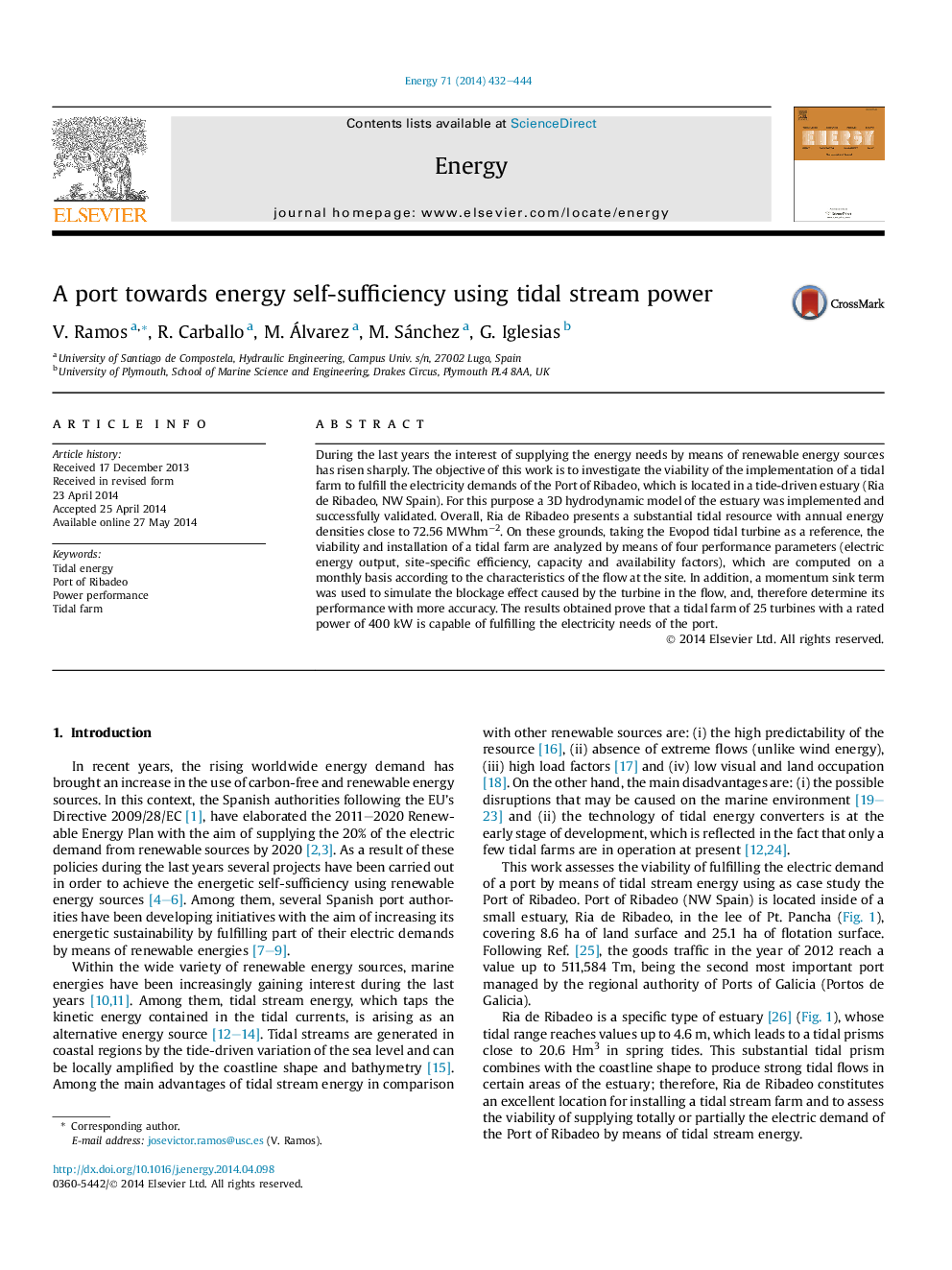| Article ID | Journal | Published Year | Pages | File Type |
|---|---|---|---|---|
| 1732405 | Energy | 2014 | 13 Pages |
•The viability of a tidal stream farm in Ria de Ribadeo was analyzed.•A 3D model was used to determine the hydrodynamics on the Ria.•The model was successfully validated with field measurement.•The momentum sink approach is used to simulate the tidal farm.•A pre-dimensioning of a prospective tidal farm of 25 turbines is presented.
During the last years the interest of supplying the energy needs by means of renewable energy sources has risen sharply. The objective of this work is to investigate the viability of the implementation of a tidal farm to fulfill the electricity demands of the Port of Ribadeo, which is located in a tide-driven estuary (Ria de Ribadeo, NW Spain). For this purpose a 3D hydrodynamic model of the estuary was implemented and successfully validated. Overall, Ria de Ribadeo presents a substantial tidal resource with annual energy densities close to 72.56 MWhm−2. On these grounds, taking the Evopod tidal turbine as a reference, the viability and installation of a tidal farm are analyzed by means of four performance parameters (electric energy output, site-specific efficiency, capacity and availability factors), which are computed on a monthly basis according to the characteristics of the flow at the site. In addition, a momentum sink term was used to simulate the blockage effect caused by the turbine in the flow, and, therefore determine its performance with more accuracy. The results obtained prove that a tidal farm of 25 turbines with a rated power of 400 kW is capable of fulfilling the electricity needs of the port.
